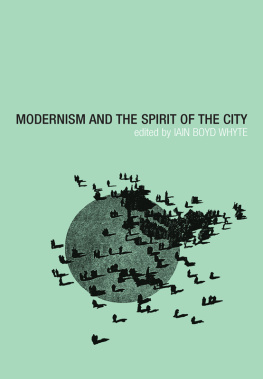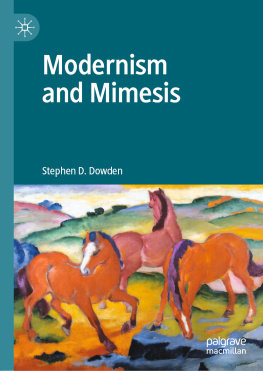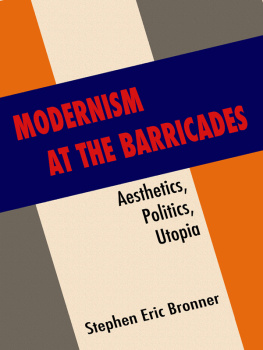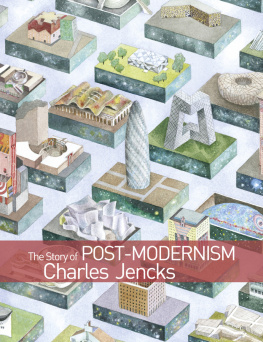Schuldenfrei - Luxury and modernism: architecture and the object in Germany, 1900-1933
Here you can read online Schuldenfrei - Luxury and modernism: architecture and the object in Germany, 1900-1933 full text of the book (entire story) in english for free. Download pdf and epub, get meaning, cover and reviews about this ebook. City: Princeton;New Jersey, year: 2018, publisher: Princeton University Press, genre: Romance novel. Description of the work, (preface) as well as reviews are available. Best literature library LitArk.com created for fans of good reading and offers a wide selection of genres:
Romance novel
Science fiction
Adventure
Detective
Science
History
Home and family
Prose
Art
Politics
Computer
Non-fiction
Religion
Business
Children
Humor
Choose a favorite category and find really read worthwhile books. Enjoy immersion in the world of imagination, feel the emotions of the characters or learn something new for yourself, make an fascinating discovery.
- Book:Luxury and modernism: architecture and the object in Germany, 1900-1933
- Author:
- Publisher:Princeton University Press
- Genre:
- Year:2018
- City:Princeton;New Jersey
- Rating:4 / 5
- Favourites:Add to favourites
- Your mark:
- 80
- 1
- 2
- 3
- 4
- 5
Luxury and modernism: architecture and the object in Germany, 1900-1933: summary, description and annotation
We offer to read an annotation, description, summary or preface (depends on what the author of the book "Luxury and modernism: architecture and the object in Germany, 1900-1933" wrote himself). If you haven't found the necessary information about the book — write in the comments, we will try to find it.
Schuldenfrei: author's other books
Who wrote Luxury and modernism: architecture and the object in Germany, 1900-1933? Find out the surname, the name of the author of the book and a list of all author's works by series.
Luxury and modernism: architecture and the object in Germany, 1900-1933 — read online for free the complete book (whole text) full work
Below is the text of the book, divided by pages. System saving the place of the last page read, allows you to conveniently read the book "Luxury and modernism: architecture and the object in Germany, 1900-1933" online for free, without having to search again every time where you left off. Put a bookmark, and you can go to the page where you finished reading at any time.
Font size:
Interval:
Bookmark:

LUXURY
AND
MODERNISM
LUXURY
AND
MODERNISM
ARCHITECTURE AND THE OBJECT IN GERMANY 19001933
ROBIN SCHULDENFREI
PRINCETON UNIVERSITY PRESS
PRINCETON AND OXFORD

FOR HENRY AND THEO
CONTENTS
INTRODUCTION
LUXURY IN MODERNISM
In 1930, as part of the Bauhauss book series, Walter Gropius published Bauhausbauten Dessau (Bauhaus buildings Dessau), which described the recent architectural work of the Bauhaus, including a thorough description of the school building, his own directors house, and the other masters houses, accompanied by photographs fully documenting the buildings and their interiors. One detail, albeit small, is telling: the published version of Lucia Moholys photograph of Gropiuss bathroom has been retouchedthe marble veining from the double-basin sink has been erased to make it appear as if it were made of porcelain, suggesting an industrial product rather than a luxury object ( Indeedand in striking contrastthe less lavish bathrooms in the masters houses have porcelain single-basin sinks of standard manufacture. Gropiuss marble sink is a curious element in a bathroom otherwise representative of the pared-down, industrial ideals of modern architecture: a band of horizontal windows lets in abundant light, and an unornamented, unframed mirror is affixed directly to the wall, while a naked light bulb extended on a metal arm, exposed radiator, glass shelves, and the other bathroom hardware all seem to celebrate the products of industry. The richly veined marble sink, a seeming anomaly, makes for a more visually welcoming and warmer room, softening the potentially more jarring elements such as the bare light bulb. But the published photograph makes the room appear more modern, more industrial, and less luxurious than it was in reality. This, perhaps, is the essence of the intersection of modernism and luxurythe ideal of industrial production as a new visual trope of modern life, undercut, upon deeper investigation, by materially and psychologically lavish interiors used to promote a way of living and an enviable (but often hidden) opulence in a new register. In order to demonstrate its pervasiveness in, and centrality to, the development of modern architecture and objects in Germany in the period 19001930, this study considers the luxury of modernism in its many manifestationstechnological, material, spatial, social, economic, philosophical, psychological, and intellectual.
Modernism in design and architecture encompassed social and material goals, in addition to aesthetic onesa new concern for the welfare of the masses as well as a sustained focus on the development of standard types and improved mass production, with the desired end centered on the proliferation of well-designed buildings and industrially produced goods. Following Christopher Wilk, this study understands the term modernism as describing not a style but a loose collection of ideas, including an espousal of the new, a rejection of history and tradition, a utopian desire to create a better world, a belief in the potential of the machine and industrial technology, a rejection of applied ornament and decoration, an embrace of abstraction, and a belief in the unity of all of the arts.
Figure I.1. Walter Gropius, directors house, bathroom, Dessau, 1926. Photograph by Lucia Moholy.
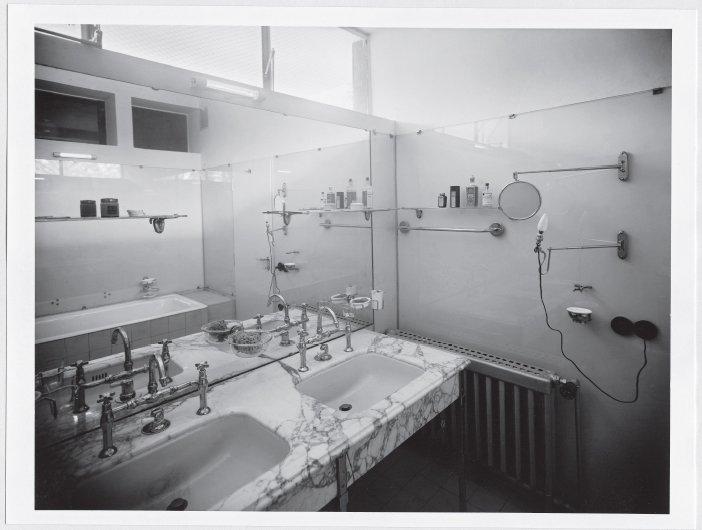
Same bathroom as published in Bauhausbauten Dessau (Munich: A. Langen, 1930). Photograph by Lucia Moholy, retouched.
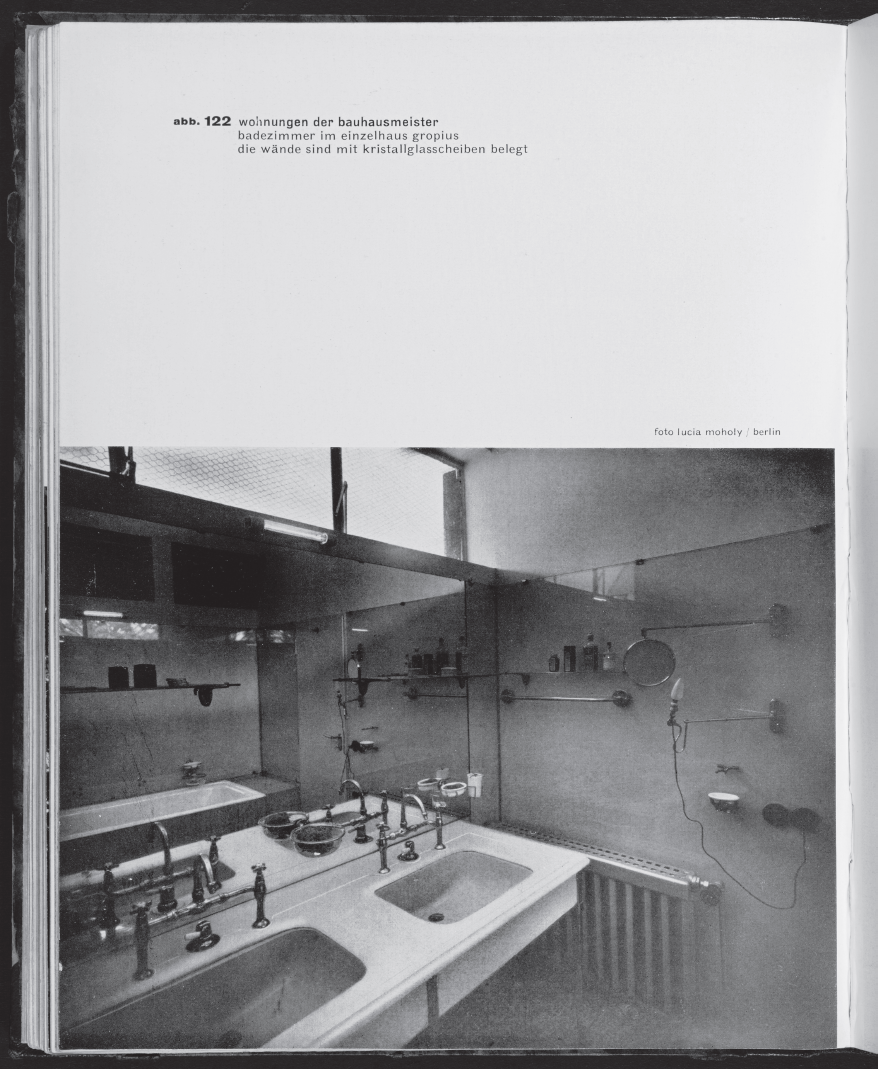
Design of furniture, objects, and decorative details has always been in the purview of architects. In the beginning of the twentieth century, architects (several of whom began their careers as artists, such as Peter Behrens and Henry van de Velde) renewed their focus on the status of the object in society as an essential component of architectural and cultural discourse. They particularly turned from preponderantly composing individual designs for customers who commissioned specific work to the design of objects for customers unknown to them. On this new terrain arose the discourse of modernism, but also an important disconnect between this discourse and existing design and production structures. This book examines the emergence of modern luxury objects and elite architectural commissions, with their attendant utopian implications and democratic ideals. It argues that all too often these designs were out of the reach of the very people they purported to serve. Discussions surrounding modernism have often focused on the idea of good design for the masses, a position that was promoted by a select group of architects, designers, artists, cultural theorists, and industrialists. These protagonists, it will be argued, revealed their own elitist attitudes through both their discussions and the luxury objects they designed and analyzed. The ostensible subject of period debates was the masses and the middle-class consumers with newly acquired purchasing power and leisure time to frequent exhibitions and department stores. However, the generators ofand audience forthis discourse was instead essentially an intellectual elite represented by forward-thinking architects and designers, sociologists, cultural critics, and economists. Modernisms consumer base was made up of the upper class. Criticism of the elitism and luxury of the modern movement was present in its day. Czech critic Karel Teiges 1932 excoriation is worth quoting at length:
At present, construction practice and commercial architecture are a public service only to the extent that they serve the modern builderthat is, the ruling class. We may read in one book statements such as the real creator of modern architecture is not the architect, but the modern customer, but discover a more honest confession and a more exact definition of what a modern builder really represents in another, such as W. C. Behrendts Der Sieg des neuen Baustils [The Victory of the New Building Style, 1927], where the same customer is exhorted to accept the new style because in his daily practice as businessman, factory owner, or banker, he represents the most modern human typea type that manages a modern enterprise, drives a luxury automobile, travels by air or in a railroad sleeping coach, and daily receives his stock market quotations by teletype. And yet, the ideal of this most modern man human type is more likely than not a house or apartment resembling historical replicas of the Petit Trianon, the
The exclusive nature of the modern movement in architecture has mainly been downplayed in favor of the populist positions established by the protagonists themselves, as well as the early historians of the movement, continuing, with some exceptions, to the present. The seeming disconnect between modernisms goals and its realities will be closely examined for a richer, more nuanced reading of modern architecture and its objects. Luxury embodies modernisms critical shortcomings but was also employed toward constructive ends; both parts of this dialectic will be considered. Luxury and Modernism explores the seemingly familiar territory of Wilhelmine and Weimar German architecture and design to argue that the under-recognized presence, and indeed theme, of luxury in modernism was not only a critical shortcoming but also a productive creative practice among German modernists. Instead of being simply a contradiction of modernisms leftist leanings, luxury was, at times, also a useful statement of its wider ambitions. By repurposing the notion of luxury away from being solely a taint, a more nuanced understanding of the depth, complexity, and challenges of modernism as it was practiced, sold, and consumed comes to the fore.
Next pageFont size:
Interval:
Bookmark:
Similar books «Luxury and modernism: architecture and the object in Germany, 1900-1933»
Look at similar books to Luxury and modernism: architecture and the object in Germany, 1900-1933. We have selected literature similar in name and meaning in the hope of providing readers with more options to find new, interesting, not yet read works.
Discussion, reviews of the book Luxury and modernism: architecture and the object in Germany, 1900-1933 and just readers' own opinions. Leave your comments, write what you think about the work, its meaning or the main characters. Specify what exactly you liked and what you didn't like, and why you think so.





